#paneer biryani recipe
Text
Only FOR VEGANS it's PANEER RICE and PANEER FRY LIKE COMMENT IF YOU LOVE

#cooking#food#healthy eating#delicious#cookingismypassion#food blogger#foodie#breakfast#paneer biryani recipe#dinner#paneer tikka#desi style paneer
2 notes
·
View notes
Photo
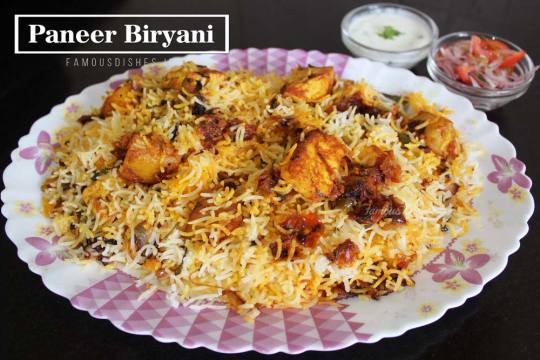
Veg Paneer Biryani Recipe a well known dish among vegans and meat darlings the same. Attempt this simple recipe today!
Checkout Our Detail Recipe Blog ➡️ https://famousdishes.in/veg-paneer-biryani-recipe-veg-biryani-how-make-veg-paneer-biryani/
Checkout recipe video ➡️ https://youtu.be/-Zi-4y15ufI
0 notes
Text
Flavor Fusion: SIFI Prakash's Paneer Tikka Biryani Delight

"SIFI Prakash's Paneer Tikka Biryani is a flavorful fusion dish, blending aromatic biryani rice with succulent paneer tikka. Exceptional!"
#sifiprakash#prakashnamkeen#clap#cookies#roorkee#prakashsweets#dessert#recipes#paneer#biryani#indian food
1 note
·
View note
Text
paneer biryani recipe easy paneer recipes

0 notes
Text
Poha Biryani: The Easy and Delicious Way to Enjoy Biryani.
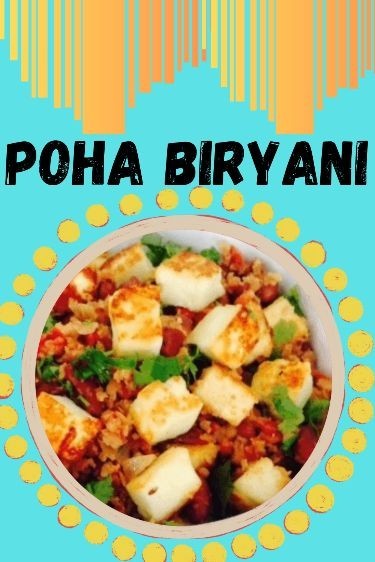
#food#recipe#foodie#bread#dessert#cooking#breakfast#baking#dinner#foodies#lunch#low cal lunch#foods#lunchtime#biryani#poha#poha recipe#paneer#veggies#vegan#vegetarian#vegetables
1 note
·
View note
Text
Easy Vegetable Biryani Recipe - Delicious and Healthy
This easy vegetable biryani recipe is packed with flavourful spices, fresh vegetables, and aromatic basmati rice, making it a healthy and satisfying meal. Whether you are a vegetarian or simply looking for a delicious rice dish, this recipe is sure to impress!
Vegetable biryani is a classic Indian dish that has been enjoyed for generations. Originating in the Indian subcontinent, biryani has…
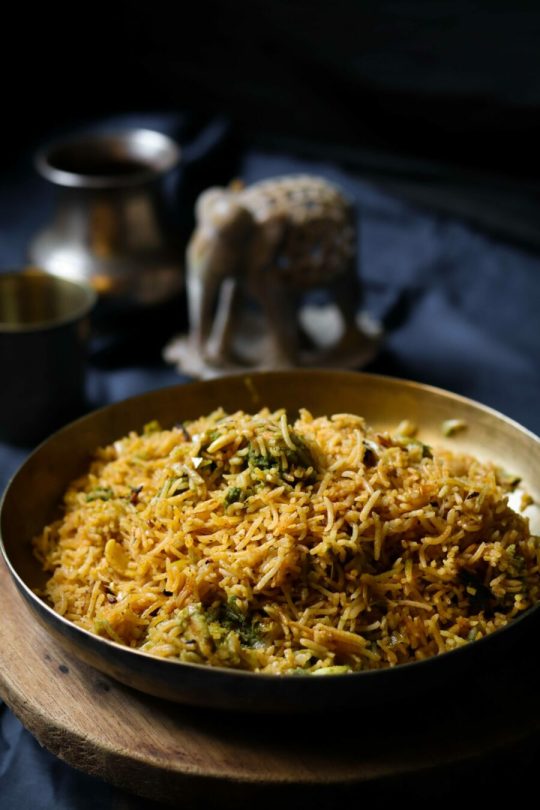
View On WordPress
#Authentic vegetable biryani recipe.#Easy vegetable biryani recipe#Gluten-free vegetable biryani#Healthy vegetable biryani#Indian vegetable biryani#One-pot vegetable biryani#Paneer biryani#Spicy vegetable biryani#Vegan vegetable biryani#Vegetable biryani with basmati rice
0 notes
Text
Paneer Makhani Biryani Recipe: ऐसे बनाएंगे पनीर मखनी बिरयानी तो खाने वाले नहीं भूल पाएंगे स्वाद
Paneer Makhani Biryani Recipe: ऐसे बनाएंगे पनीर मखनी बिरयानी तो खाने वाले नहीं भूल पाएंगे स्वाद
पनीर मखनी बिरयानी रेसिपी (Paneer Makhani Biryani Recipe): पनीर से बनने वाली सब्जियों और पनीर भुर्जी का तो आपने कई बार स्वाद लिया होगा लेकिन क्या पनीर मखनी बिरयानी (Paneer Makhani Biryani) की रेसिपी को ट्राई किया है. हमारे यहां पार्टियों और फंक्शंस में खासतौर पर बिरयानी बनाई जाती है. स्ट्रीट फूड के तौर पर भी बिरयानी काफी प्रचलित है. पारंपरिक बिरयानी के अलावा इसकी कई वैराइटीज़ काफी फेमस है. बिरयानी…
View On WordPress
#easy way to cook Paneer makhani biryani#how to cook Paneer makhani biryani#Paneer makhani biryani#Paneer makhani biryani recipe#पनीर मखनी बिरयानी कैसे बनाते हैं#पनीर मखनी बिरयानी बनाने का तरीका#पनीर मखनी बिरयानी रेसिपी
0 notes
Note
this is my first time writing a request, so please let me know if i need to be more specific! i was wondering if you could write a desi reader x the dorm heads (twisted wonderland). like introducing the boys to the culture and stuff like that? thank you!!
YES OF COURSE!!!! I’m desi myself! We desperately need representation in anime/game spaces, these are just the ones I could think of one the spot, but I saw this request and it made my day!!
also fun fact: this blog was originally supposed to be centered around desi women, but I couldn’t keep up with that idea, this is such a lovely reminder!!
Warnings: Fluff, food, hair mentioned, ‘starting a family’ mention but no kids or anything, unapologetic cultural appreciation, desi families (positive), author calls the pale ones gora pakoras, rambling
Dorm Leaders with a Desi Girlfriend!

Riddle Rosehearts
I don’t think you understand how much your mom loves him
His spice tolerance is at ZERO, but boy will he try for you
He adores gulab jamuns, I mean ROSES?? WITH DESSERT?? This is his destiny
Adores chai, drinks more chai than all your aunts combined
He loves chai so much he’ll ask for you to make it for the tea parties, drinks the chai with biscuits
OFF WITH THEIR HEAD to anyone who calls it ‘chai tea’ !!!
Desi jewelry is his favorite thing you wear, the intricate patterns and shapes make his heart beat faster
If you get him jewelry he’s probably gonna cry
“You look absolutely gorgeous, I almost can't believe you’re with me.”
Leona Kingscholar
The mix of y’all’s cultures is perfect
He will happily eat spicy meat, he can go on about the meat
Biryani is his favorite, goat or chicken
You might expect me to say your parents don’t like him, but HE’S LITERALLY A PRINCE, man is rich asf you’re gonna be taken care of
He’s also so respectful to your mom, she def tells you to act more like him
If you have to accompany him to some gaudy event in the savanna, and you choose to wear cultural clothing, like a sari or salwar kameez, he’s literally frozen
o
m
g
He’s buying a ring as we speak
All the whatsapp aunties are gossiping about the two of you, but you literally couldn’t care
He’s def the type to buy you jewelry
“I- god for once in my life I literally don’t have words, you’re glowing.”
Azul Ashengrotto
I will defend fishy fishman until my last day
he is such a good boyfriend, always treating you out and keeping you happy
Your parents support you two, because Azul has a good head on his shoulders and has a good chance of being successful
He really adores you in blue, especially blue lehengas, you look like a princess to him
he is super appreciative whenever you introduce him to new recipes, his lounge may even use some of the spice blends you suggest (with credit)
He enjoys paneer pakoras, fried desi food is a wonder to him
“I know I’m stuffing my face right now, but can you really blame me?”
Kalim Al-Asim
HE IS PERFECT !!
He’s so happy to meet someone of a similar culture to him!
But this is also where his main problem lies..
He’s so blushy around you its crazy
Never did he think he could meet someone who he knows so well, who feels like home and warm welcomes
You two go on so many adventures
Jamil is so tired, let my man rest
Sometimes the cultural overlap is so prominent, especially in words and food items
Both of you adore a good lamb curry
You ever see that tikitok trend, the “I can’t date outside of my culture because how am I supposed to explain _______”
You both can relate to that one.
Something about you brings out the poet in him
(I have to stop eventually because this could just become it’s own post)
“You are my home, you are warmth and kindness packed into a beautiful human being.”
Vil Shoenheit
THIS
He’s honestly so happy to be in a relationship with a desi girl, you open up a whole new world to him
I feel like he would be an appreciator of desi bread on his cheat days
Especially paratha, it’s so buttery and rich, he’ll eat it with achaar
Your clothes always astound him
He’s used to glitz and glamour, but the sheer amount of detail in your outfits, that will leave him speechless
I believe he’d enjoy salwar kameez, especially in a more early 2000s way (think kabhi khushi kahbie gham)
Honestly he enjoys everything about desi fashion, he deeply respects you for wearing those HEAVY
Helps you oil your hair, it’s an extremely intimate moment and you grow a lot closer together
“Liebling, please hold still, I still have to get to the back of your head!”
Idia Shroud
(He’s Greek in my heart)
Idia is such a little loser/pos
He’s so nervous at any of your family gatherings, ortho has to hype him up before
He’s definitely the person at a desi house party who slips away after the food is served, literally gone
If he ever visits your country (in a different dimension lol) he might have a tough time
Homie is so sensitive to hot weather, he’s getting sunburned so hard
He gets so shy when you’re all dolled up, he can’t even look you in the eye
You just look so above his league
This is where you build his confidence, because he would look gorgeous in desi clothes
Him in a kurta is the thing that would actually kill me
Idia is obsessed with you, even if the time you spend together is spent inside his room, cuddled up watching anime or playing games instead of socializing
You probably get him into old bollywood movies
“I mean, we ate already, what’s the point of sticking around?”
Malleus Draconia
He’s a well educated person, so he probably keeps a respectful distance until you start educating him on your culture
Malleus deeply enjoys the sense of family in desi culture, the community that helps one another and keeps your head lifted
It reminds him of his own caring upbringing
He’s another appreciator of desi desserts, more modern ones tend to stick to him better, like mango ice cream
He is smitten with Rooh Afza in milk, even if he doesn’t need human drinks
He finds your cultural apparel so pretty
especially if you wear deeper colors like emerald and black
He really just wants to match
Really enjoys historical drama bollywood movies
Is the type to tell you when your chunni is slipping off, and carries extra safety pins to help with fashion mishaps
“I hope one day, our own family will be a beautiful as this.”
I’m so sorry for the bad dialogue, every time I try to think of something a character says, the voice in my head (inner monologue) turns into bob belcher from bob’s burgers. I will be trying my best to fix the flat dialogue with better nicknames and stuff. Thank you for reading.
#new fanfic blog#female reader#fanfic#fanfiction#reader insert#fem!reader#twisted wonderland x reader#twst x reader#twst imagines#riddle rosehearts x reader#riddle rosehearts#leona kingscholar x reader#leona kingscholar#azul ashengrotto x reader#azul ashengrotto#kalim al asim x reader#kalim al asim#vil shoenheit#vil schoenheit x reader#idia shroud#idia shroud x reader#malleus draconia#malleus draconia x reader#headcanons#desi reader#desi!reader#WOC#woc!reader#poc reader#cultural appreciation
293 notes
·
View notes
Text
INDIAN FOODS IN USA
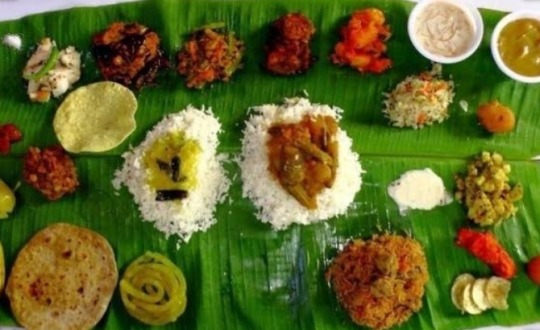
Hi Readers, welcome to indianfoodinusadotcom, Here you can learn all about Indian foods, recipes and all about INDIAN FOOD like {ABOUT INDIAN FOOD}
{HISTORY}
{VEDIC AGES}
{ANTIQUITY}
{FOOD MENTIONED IN ANECIENT INDIAN SCRIPTURE}
{MIDDLE AGE OF 16th CENTURY}
{COLONIAL PERIODS}
{INGREDIENTS}
{RECIPES}
LIKE (a) chicken Biryani (b) mutton biryani (c)Butter chicken (d) chicken tikka masala (e) veg biryani (f) Palak paneer (g) Matar paneer (h) chutneys, AND Many more.
ABOUT INDIAN FOOD in USA
You will get know more about the best restaurants Around the world
INDIAN FOOD consists of a variety of regional and traditional cuisines native to India. Given the diversity in soil, climate, culture, ethnic groups, and occupations, these cuisines vary substantially and use locally available spices, herbs, vegetables, and fruits.
Indian food is also heavily influenced by religion, in particular Hinduism and Islam, cultural choices.
Historical events such as invasions, trade relations, and colonialism have played a role in introducing certain foods to this country. The Columbian discovery of the New World brought a number of new vegetables and fruit to India. A number of these such as potatoes, tomatoes, chillies, peanuts, and guava have become staples in many regions of India.
INDIAN FOOD has shaped the history of international relations; the spice trade between India and Europe was the primary catalyst for Europe's Age of Discovery.
Spices were bought from India and traded around Europe and Asia. INDIAN FOOD has influenced other cuisines across the world, especially those from Europe (especially Britain), the Middle East, Southern African, East Africa, Southeast Asia, North America, Mauritius, Fiji, Oceania, and the Caribbean.
HISTORY OF INDIAN FOOD NON-VEGETARIAN
INDIAN FOOD reflects an 8,000-year history of various groups and cultures interacting with the Indian subcontinent, leading to a diversity of flavors and regional cuisines found in modern-day India. Later, trade with British and Portuguese influence added to the already diverse INDIAN FOOD.
After 9000 BCE, the first period of indirect contact between the Fertile Crescent and Indus Valley civilizations seems to have occurred due to the Neolithic Revolution and the diffusion of agriculture. Around 7000 BCE, agriculture spread from the Fertile Crescent to the Indus Valley, and wheat and barley began to be grown. Sesame and humped cattle were domesticated in the local farming communities.
Mehrgarh is one of South Asia's earliest sites with evidence of farming and herding. From circa 4500 to 1900 BC the rulers of Lower Mesopotamia were Sumerians who spoke a non-Indo-European and non-Semitic language, may have initially come from India and may have been related to the original Dravidian population of India.
By 3000 BCE, turmeric, cardamom, black pepper and mustard were harvested in India.
From Around 2350 BCE the evidence for imports from the Indus to Ur in Mesopotamia have been found, as well as Clove heads which are thought to originate from the Moluccas in Maritime Southeast Asia were found in a 2nd millennium BC site in Terqa. Akkadian Empire records mention timber, carnelian and ivory as being imported from Meluhha by Meluhhan ships, Meluhha being generally considered as the Mesopotamian name for the Indus Valley Civilization.
VEDIC AGE
VEGETARIAN
The ancient Hindu text Mahabharata mentions rice and vegetable cooked together, and the word "pulao" or "pallao" is used to refer to the dish in ancient Sanskrit works, such as Yājñavalkya Smṛti. Ayurveda, ancient Indian system of wellness, deals with holistic approach to the wellness, and it includes food, dhyana (meditation) and yoga.
ANTIQUITY
Early diet in India mainly consisted of legumes, vegetables, fruits, grains, dairy products, and honey.
Staple foods eaten today include a variety of lentils (dal), whole-wheat flour (aṭṭa), rice, and pearl millet (bājra), which has been cultivated in the Indian subcontinent since 6200 BCE.
Over time, segments of the population embraced vegetarianism during the Śramaṇa movement while an equitable climate permitted a variety of fruits, vegetables, and grains to be grown throughout the year.
A food classification system that categorised any item as saatvic, raajsic, or taamsic developed in Yoga tradition. The Bhagavad Gita proscribes certain dietary practices.
Consumption of beef is taboo, due to cows being considered sacred in Hinduism.[14] Beef is generally not eaten by Hindus in India except for Kerala, parts of southern Tamil Nadu and the north-east.
PICKLES
FOOD MENTIONED IN ANECIENT INDIAN SCRIPTURE
While many ancient Indian recipes have been lost in history, one can look at ancient texts to see what was eaten in ancient and pre-historic India.
Barley—(known as Yava in both Vedic and Classical Sanskrit) is mentioned many times in Rigveda and other Indian scriptures as one of the principal grains in ancient India
Betel leaf—primary use is as a wrapper for the chewing of areca nut or tobacco, where it is mainly used to add flavour; may also be used in cooking, usually raw, for its peppery taste
Breadfruit—fritters called jeev kadge phodi in Konkani or kadachakka varuthath in Malayalam are a local delicacy in coastal Karnataka and Kerala
Chickpeas—popular dishes are made with chickpea flour, such as mirchi bajji and mirapakaya bajji
Curd—a traditional yogurt or fermented milk product, originating from the Indian subcontinent, usually prepared from cow's milk, and sometimes buffalo milk, or goat milk
Figs —cultivated from Afghanistan to Portugal, also grown in Pithoragarh in the Kumaon hills of India; from the 15th century onwards, also grown in areas including Northern Europe and the New World
Ghee—a class of clarified butter that originated in ancient India, commonly used in the Indian subcontinent, Middle-Eastern cuisine, traditional medicine, and religious rituals
Grape wine —first-known mention of grape-based wines in India is from the late 4th-century BC writings of Chanakya
Honey —the spiritual and supposed therapeutic use of honey in ancient India was documented in both the Vedas and the Ayurveda texts
Mango—the Jain goddess Ambika is traditionally represented as sitting under a mango tree
Mustard —brown mustard is a spice that was cultivated in the Indus Valley civilization and is one of the important spices used in the Indian subcontinent today
Pomegranate—in some Hindu traditions, the pomegranate (Hindi: anār) symbolizes prosperity and fertility, and is associated with both Bhoomidevi (the earth goddess) and Lord Ganesha (the one fond of the many-seeded fruit)
Rice—cultivated in the Indian subcontinent from as early as 5,000 BC
Rice cake—quite a variety are available
Rose apple—mainly eaten as a fruit and also used to make pickles (chambakka achar)
Saffron —almost all saffron grows in a belt from Spain in the west to Kashmir in the east
Salt —considered to be a very auspicious substance in Hinduism and is used in particular religious ceremonies like house-warmings and weddings; in Jainism, devotees lay an offering of raw rice with a pinch of salt before a deity to signify their devotion, and salt is sprinkled on a person's cremated remains before the ashes are buried
Sesame oil —popular in Asia, especially in Korea, China, and the South Indian states of Karnataka, Andhra Pradesh, and Tamil Nadu, where its widespread use is similar to that of olive oil in the Mediterranean
Sorghum—commonly called jwaarie, jowar, jola, or jondhalaa, sorghum is one of the staple sources of nutrition
Sugar—produced in the Indian subcontinent since ancient times, its cultivation spread from there into modern-day Afghanistan through the Khyber Pass
Sugarcane—the earliest known production of crystalline sugar began in northern India; the earliest evidence of sugar production comes from ancient Sanskrit and Pali texts
Turmeric —used widely as a spice in South Asian and Middle Eastern cooking
Middle Ages to the 16th Century
VEG DUM BIRYANI
During the Middle Ages, several Indian dynasties were predominant, including the Gupta dynasty. Travel to India during this time introduced new cooking methods and products to the region, including tea.
India was later invaded by tribes from Central Asian cultures, which led to the emergence of Mughlai cuisine, a mix of Indian and Central Asian cuisine. Hallmarks include seasonings such as saffron.
Colonial Period
The Portuguese and British during their rule introduced cooking techniques such as baking, and foods from the New World and Europe.
The new-world vegetables popular in cuisine from the Indian subcontinent include tomato, potato, sweet potatoes, peanuts, squash, and chilli. Most New World vegetables such as sweet potatoes, potatoes, Amaranth, peanuts and cassava based Sago are allowed on Hindu fasting days. Cauliflower was introduced by the British in 1822. In the late 18th/early 19th century, an autobiography of a Scottish Robert Lindsay mentions a Sylheti man called Saeed Ullah cooking a curry for Lindsay's family. This is possibly the oldest record of INDIAN FOOD in the United Kingdom.
INGREDIENTS
Staple foods of INDIAN FOOD include pearl millet (bājra), rice, whole-wheat flour (aṭṭa), and a variety of lentils, such as masoor (most often red lentils), tuer (pigeon peas), urad (black gram), and moong (mung beans). Lentils may be used whole, dehusked—for example, dhuli moong or dhuli urad—or split. Split lentils, or dal, are used extensively, Some pulses, such as channa or cholae (chickpeas), rajma (kidney beans), and lobiya (black-eyed peas) are very common, especially in the northern regions. Channa and moong are also processed into flour (besan).
Many Indian dishes are cooked in vegetable oil, but peanut oil is popular in northern and western India, mustard oil in eastern India, and coconut oil along the western coast, especially in Kerala and parts of southern Tamil Nadu, Gingelly (sesame) oil is common in the south since it imparts a fragrant, nutty aroma.
In recent decades, sunflower, safflower, cottonseed, and soybean oils have become popular across India, Hydrogenated vegetable oil, known as Vanaspati ghee, is another popular cooking medium, Butter-based ghee, or deshi ghee, is used commonly.
Many types of meat are used for Indian cooking, but chicken and mutton tend to be the most commonly consumed meats. Fish and beef consumption are prevalent in some parts of India, but they are not widely consumed except for coastal areas, as well as the north east.
The most important and frequently used spices and flavourings in INDIAN FOOD are whole or powdered chilli pepper (mirch, introduced by the Portuguese from Mexico in the 16th century), black mustard seed (sarso), cardamom (elaichi), cumin (jeera), turmeric (haldi), asafoetida (hing), ginger (adrak), coriander (dhania), and garlic (lasoon).
One popular spice mix is garam masala, a powder that typically includes seven dried spices in a particular ratio, including black cardamom, cinnamon (dalchini), clove (laung), cumin (jeera), black peppercorns, coriander seeds and anise star.
Each culinary region has a distinctive garam masala blend—individual chefs may also have their own. Goda masala is a comparable, though sweet, spice mix popular in Maharashtra. Some leaves commonly used for flavouring include bay leaves (tejpat), coriander leaves, fenugreek (methi) leaves, and mint leaves. The use of curry leaves and roots for flavouring is typical of Gujarati and South INDIAN FOOD.
2 notes
·
View notes
Text
Best Indian Food Catering Company in Leicester
For over a decade, Ganis has been a leading provider of Indian food catering services in Leicester and the East Midlands. We are dedicated to preserving the authenticity and traditional flavours of Indian cuisine and bringing them to your special events and occasions. Our experienced team of chefs uses only the freshest ingredients and time-honoured recipes to create a menu that is both delicious and memorable.

Whether you're in the mood for classic dishes like biryani and butter chicken, or something new and exciting like paneer tikka and tandoori salmon, we have something for everyone. Our menu is designed to showcase the diversity of Indian cuisine, from original desi dishes to modern twists. We are passionate about creating a memorable dining experience for each and every one of our customers, and our team is dedicated to ensuring that every dish we serve is of the highest quality.
At Ganis, we take pride in our expertise in all types of Indian catering, from weddings and corporate events to intimate gatherings and dinner parties. Our commitment to using only the finest ingredients and preparation methods passed down through generations sets us apart from other catering services in the region. Whether you're looking for a caterer for your next event or simply craving the taste of authentic Indian cuisine, Ganis is the perfect choice.
For more information, Enquiry us at [email protected]
#catering near me#catering services near me#outdoor catering services#buffet catering near me#wedding caterers leicester#event management service#event catering services#corporate catering near me#contract catering service#childrens party food catering#christmas dinner catering#halal catering leicester#vegan wedding catering
2 notes
·
View notes
Text
Discovering the Best Indian Food in Dubai: A Culinary Journey at House of Kabila Restaurant
Dubai, a cosmopolitan city known for its luxurious lifestyle and diverse culinary landscape, offers an array of dining experiences that cater to every palate. Among the numerous gastronomic delights, Indian cuisine holds a special place, celebrated for its rich flavors, aromatic spices, and traditional cooking techniques. For those seeking the best Indian food in Dubai, the House of Kabila restaurant stands out as a premier destination.
House of Kabila: A Culinary Gem in Dubai
Nestled in the heart of Dubai, House of Kabila is a haven for Indian food enthusiasts. This restaurant has earned a stellar reputation for its authentic and innovative approach to Indian cuisine. With a menu that spans the diverse culinary traditions of India, House of Kabila promises an unforgettable dining experience.
A Feast for the Senses
House of Kabila takes pride in offering a menu that is both extensive and eclectic. From the northern regions of Punjab to the coastal flavors of Kerala, the restaurant captures the essence of India’s culinary diversity. Each dish is meticulously crafted using traditional recipes and the finest ingredients, ensuring a feast for the senses.
Signature Dishes
1. Butter Chicken: A quintessential North Indian dish, House of Kabila’s butter chicken is renowned for its creamy tomato-based gravy, tender chicken pieces, and a perfect blend of spices.
2. Hyderabadi Biryani: This aromatic rice dish, infused with saffron and rich spices, features succulent pieces of meat or vegetables, offering a symphony of flavors with every bite.
3. Masala Dosa: A South Indian favorite, the crispy and golden dosa served with a variety of chutneys and sambar is a must-try at House of Kabila.
4. Paneer Tikka: For vegetarian patrons, the paneer tikka, with its marinated and grilled cottage cheese cubes, is a delightful starter that showcases the rich flavors of Indian spices.
5. Rogan Josh: A specialty from Kashmir, this slow-cooked lamb dish is a masterpiece of culinary artistry, with its tender meat and fragrant gravy.
Ambiance and Hospitality
House of Kabila offers an ambiance that complements its culinary offerings. The decor is a blend of contemporary elegance and traditional Indian elements, creating a warm and inviting atmosphere. The restaurant’s commitment to exceptional service ensures that every guest feels welcomed and valued.
Catering to Every Occasion
Whether it’s a casual dinner, a family gathering, or a corporate event, House of Kabila provides a versatile dining space suitable for all occasions. The restaurant also offers catering services, bringing its exquisite Indian cuisine to your special events.
Commitment to Quality
At House of Kabila, quality is paramount. The restaurant sources the freshest ingredients and maintains high standards of hygiene and preparation. The chefs, with their deep knowledge of Indian cuisine, ensure that every dish not only meets but exceeds expectations.
Conclusion
For those in search of the best Indian food in Dubai, House of Kabila restaurant offers an unparalleled dining experience. With its authentic flavors, diverse menu, and impeccable service, it has become a favorite among locals and tourists alike. Whether you are a connoisseur of Indian cuisine or a first-time explorer, House of Kabila promises a culinary journey that will leave you craving for more.
Discovering the Best Indian Food in Dubai: A Culinary Journey at House of Kabila Restaurant
0 notes
Text
The Most Famous Indian Dishes Captivating the World: Let's go on a journey of taste!

Indian cuisine has undergone a remarkable transformation from being a local delight to achieving global recognition as one of the most diverse and flavorful culinary traditions in the world. With its rich tapestry of flavors, aromatic spices, and vibrant colors, Indian dishes have transcended borders, captivating food enthusiasts and earning a well-deserved place on international menus.
From the bustling streets of Mumbai to upscale restaurants in New York City, the allure of Indian cuisine continues to grow, offering a tantalizing journey for the taste buds. As we embark on a culinary adventure to explore the most famous Indian dishes captivating the world, it's evident that these culinary gems represent more than just food – they embody centuries of tradition, cultural diversity, and culinary innovation.
Join us as we delve into the rich history and timeless appeal of iconic Indian dishes like Butter Chicken, Chicken Tikka Masala, Biryani, Samosas, Dosa, Naan, Matar Paneer, Rasgulla, and Jalebi, discovering the fascinating stories, flavor profiles, and global impact of each culinary masterpiece.
From the streets of Delhi to the shores of distant continents, Indian cuisine's journey is a testament to its enduring legacy and universal appeal, inviting food lovers everywhere to savor the magic of its flavors and embrace the spirit of culinary exploration.
As you explore this blog post, you'll gain a deeper appreciation for the vast culinary landscape of India and the reasons why Indian food has captured hearts (and stomachs) around the globe.
The rich tapestry of Indian cuisine reflects the country's cultural diversity and culinary heritage, offering a kaleidoscope of flavors, textures, and aromas that tantalize the senses. As Indian restaurants proliferate in cities across the globe, the popularity of Indian dishes continues to soar, with food lovers seeking out authentic flavors and traditional recipes from the subcontinent.
Let's embark on a gastronomic journey to explore the most famous Indian dishes that have transcended borders and gained widespread acclaim on the international stage.
The Most Famous Indian Dishes around the world: A Culinary Journey
Butter Chicken: A Global Craving with a Rich Indian Heritage
Butter chicken, or Murgh Makhani, has transcended its origins in Delhi's kitchens to become a global culinary icon. This dish's popularity is no accident – it's a symphony of textures and flavors that caters to a wide range of palates.
Read More
0 notes
Text
Experience the Best Family Restaurant Near Amer Fort at Hotel Indana
Jaipur, the Pink City, is a treasure trove of historical landmarks, with Amer Fort being one of the most prominent. When visiting this majestic fort, finding a family-friendly restaurant nearby can significantly enhance your experience. Hotel Indana, located conveniently close to Amer Fort, offers an exceptional family restaurant that caters to all ages. This article highlights why Hotel Indana’s family restaurant is the ideal choice for a memorable dining experience near Amer Fort.
Hotel Indana: The Ultimate Family Dining Destination Near Amer Fort
Hotel Indana is renowned for its luxurious accommodations and top-notch amenities. Its family restaurant stands out as a premier dining spot, perfect for families seeking delicious meals in a welcoming atmosphere.
Key Features of Hotel Indana’s Family Restaurant:
Family-Friendly Menu: The restaurant offers a diverse menu with dishes that cater to both adults and children, ensuring everyone finds something they love.
Healthy Options: Special attention is given to provide healthy meal options for kids, ensuring they enjoy nutritious and tasty food.
Comfortable Ambiance: The restaurant features a cozy and inviting ambiance, perfect for family gatherings. The seating arrangements are designed to accommodate families of all sizes comfortably.
Attentive Service: The staff at Hotel Indana’s family restaurant are trained to provide exceptional service, making sure every family member feels special.
Proximity to Amer Fort: Located just a short distance from Amer Fort, the restaurant offers a convenient dining option for families exploring the fort.
Must-Try Dishes at Hotel Indana’s Family Restaurant
The family restaurant at Hotel Indana offers a wide array of dishes that cater to diverse tastes and preferences.
1. Traditional Rajasthani Cuisine
Indulge in local flavors with dishes like dal baati churma, gatte ki sabzi, and kachoris. These traditional Rajasthani dishes are prepared with authentic recipes, giving you a true taste of Jaipur.
2. Indian Favorites
Enjoy a variety of Indian classics such as butter chicken, paneer tikka, and biryani. These dishes are crafted with fresh ingredients and rich spices, offering a delightful culinary experience.
3. International Cuisine
For those craving international flavors, the restaurant offers a selection of Continental and Asian dishes. From pasta and pizza to sushi and stir-fries, there’s something for everyone.
4. Kid-Friendly Meals
The kids' menu features a range of favorites such as mini burgers, chicken nuggets, and cheesy pasta. These dishes are prepared with the utmost care to ensure they are both tasty and nutritious.
5. Desserts and Beverages
End your meal with a variety of desserts and beverages. From traditional Indian sweets to ice cream and milkshakes, there’s a treat for every sweet tooth.
Why Choose Hotel Indana’s Family Restaurant?
Choosing Hotel Indana’s family restaurant for your dining experience near Amer Fort offers several benefits:
Convenience: Its proximity to Amer Fort makes it an ideal dining spot after a day of exploring.
Variety: The diverse menu ensures that all family members, from kids to adults, find something they love.
Quality: The restaurant prides itself on using fresh, high-quality ingredients to prepare every dish.
Comfort: The welcoming ambiance and comfortable seating make it perfect for family meals.
Service: The attentive staff ensure that your dining experience is enjoyable and memorable.
Conclusion
For families visiting Amer Fort, Hotel Indana’s family restaurant is the perfect place to relax and enjoy a delicious meal together. With its diverse menu, comfortable ambiance, and exceptional service, it stands out as a top dining destination in Jaipur. Whether you’re savoring traditional Rajasthani cuisine or enjoying international flavors, the restaurant at Hotel Indana promises a memorable culinary experience for the whole family. Make your visit to Amer Fort even more special by dining at Hotel Indana’s family restaurant,

0 notes
Text
Takeaway Order in Gold Coast: Enjoy the Best of Indian Cuisine from Pangaat Indian Restaurant & Bar
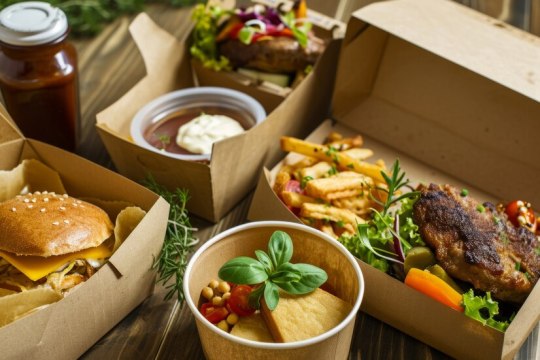
Are you craving the rich and diverse flavors of Indian cuisine? Whether you’re in the mood for spicy curries, savory biryanis, or delectable vegetarian dishes, Pangaat Indian Restaurant & Bar in Gold Coast has got you covered. With our convenient takeaway service, you can enjoy the best of Indian cuisine from the comfort of your home.
Why Choose Pangaat for Your Takeaway?
At Pangaat, we pride ourselves on delivering an authentic Indian dining experience. Our menu features a wide variety of dishes, carefully crafted to cater to both vegetarians and non-vegetarians. Here are a few reasons why Pangaat should be your go-to for takeaway orders in Gold Coast:
Authentic Flavors: Our chefs use traditional recipes and the finest ingredients to ensure every dish is packed with authentic Indian flavors.
Diverse Menu: From rich, creamy butter chicken to spicy paneer tikka, our menu offers something for everyone.
Convenient Ordering: Our easy-to-use online ordering system makes it simple to place your takeaway order. Just a few clicks, and your favorite dishes will be on their way to you.
Fresh Ingredients: We prioritize quality and freshness in every dish, ensuring you get a delightful meal every time you order.
Quick Service: We understand that you want your food fast, especially when you’re hungry. Our efficient kitchen staff ensures that your order is prepared and ready for pickup in no time.
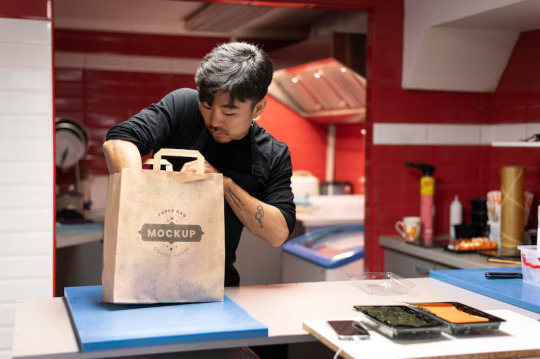
How to Place Your Takeaway Order
Placing a takeaway order with Pangaat Indian Restaurant & Bar is as easy as 1-2-3:
Browse Our Menu: Visit our website and explore our extensive menu. Whether you’re a fan of vegetarian delights or non-vegetarian classics, you’ll find a variety of options to choose from.
Place Your Order: Add your desired dishes to the cart, customize your order if needed, and proceed to checkout. Provide your contact details and preferred pickup time.
Pickup Your Order: Once your order is ready, you’ll receive a confirmation message. Head over to Pangaat Indian Restaurant & Bar at the specified time to collect your delicious meal.
Must-Try Dishes at Pangaat
Not sure what to order? Here are some of our must-try dishes that have become favorites among our regular customers:
Butter Chicken: A creamy, flavorful dish made with tender chicken pieces cooked in a rich tomato-based gravy.
Paneer Tikka: Marinated paneer cubes grilled to perfection, served with a side of mint chutney.
Lamb Rogan Josh: A hearty lamb curry cooked with aromatic spices and herbs, offering a perfect balance of heat and flavor.
Vegetable Biryani: Fragrant basmati rice cooked with mixed vegetables and a blend of traditional spices.
Garlic Naan: Soft, fluffy naan bread topped with minced garlic, perfect for scooping up your favorite curry.
Enjoy the Best of Indian Cuisine at Home
At Pangaat Indian Restaurant & Bar, we are committed to bringing the rich culinary traditions of India to Gold Coast. Our takeaway service ensures you can enjoy our delicious dishes in the comfort of your home. Whether it’s a cozy dinner for two or a family feast, we have something for everyone.
So, why wait? Place your takeaway order today and experience the vibrant flavors of India with Pangaat Indian Restaurant & Bar. Your taste buds will thank you!
0 notes
Text
Biryani Cravings on a Diet: How to Indulge Guilt-Free
The aromatic blend of spices, fluffy rice, and tender meat (or vegetables) in biryani is a culinary symphony that's hard to resist. But for those on a diet, the guilt associated with this delicious dish can often outweigh the pleasure. Fear not, biryani lovers! You can still savor the flavors of this iconic dish while keeping your diet goals on track. Here's how:
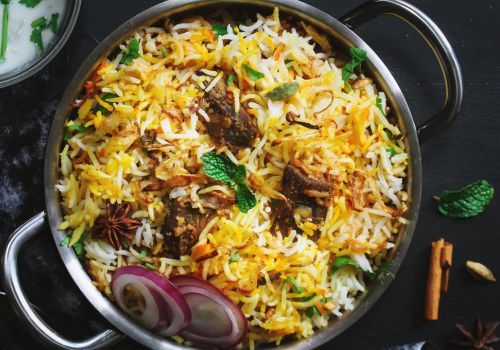
1. Understand the Nutritional Content
Before diving in, it's essential to understand the nutritional composition of biryani. A typical serving can range from 300 to 600 calories, depending on the ingredients and preparation method. It's generally high in carbohydrates from rice, protein from meat or legumes, and fat from oil or ghee used in cooking. While this might seem daunting, making informed choices can help you manage your intake.
2. Choose Leaner Protein Sources
If you're opting for a non-vegetarian biryani, choose leaner protein sources like chicken breast or fish. These options are lower in saturated fat compared to red meat like lamb or beef. For vegetarians, paneer (Indian cottage cheese) or tofu can be excellent substitutes, providing protein without the added fat.
3. Mindful Rice Selection
White rice is the traditional choice for biryani, but it's high in simple carbohydrates, which can lead to blood sugar spikes. Consider using brown rice or quinoa as healthier alternatives. These grains are rich in fiber, which keeps you feeling full for longer and helps regulate blood sugar levels.
4. Cook with Healthy Fats
While fat adds flavor and richness to biryani, using healthy fats can significantly reduce the calorie content. Opt for olive oil or avocado oil instead of ghee or butter. These oils contain monounsaturated fats, which are beneficial for heart health.
5. Spice It Up
The beauty of biryani lies in its aromatic spices. These spices not only tantalize your taste buds but also offer health benefits. Turmeric has anti-inflammatory properties, cumin aids digestion, and cinnamon helps regulate blood sugar. Don't hold back on the spices!
6. Load Up on Vegetables
Adding plenty of vegetables to your biryani is a great way to boost its nutritional value and increase its volume without adding extra calories. Bell peppers, carrots, peas, and cauliflower are just a few examples of vegetables that complement the flavors of biryani.
7. Portion Control is Key
Even with healthier modifications, portion control is crucial when indulging in biryani on a diet. A small serving of 1 cup is usually sufficient to satisfy your cravings without derailing your goals. Use a smaller plate to trick your mind into feeling satisfied with a smaller portion.
8. Balance Your Meal
Pair your biryani with a side of raita (yogurt-based dip) or salad to add balance to your meal. Raita provides probiotics, which are beneficial for gut health, while salad adds fiber and vitamins.
9. Cook at Home
When you cook biryani at home, you have complete control over the ingredients and cooking methods. This allows you to make healthier choices, such as using less oil, opting for leaner protein, and incorporating more vegetables.
10. Don't Deprive Yourself
Remember, enjoying your favorite foods in moderation is part of a sustainable diet. Completely depriving yourself of biryani might lead to cravings and eventually overindulgence. Allow yourself an occasional treat, but be mindful of your portion size and balance it with other healthy meals.
Additional Tips:
Leftovers: If you have leftover biryani, store it properly in the refrigerator and consume it within a couple of days to avoid spoilage.
Hydration: Drink plenty of water throughout the day to stay hydrated and prevent overeating.
Physical Activity: Regular exercise helps burn calories and maintain a healthy weight.
Recipes for Healthier Biryani:
Many online resources and cookbooks offer healthier biryani recipes. Look for variations that use brown rice, lean protein, plenty of vegetables, and healthier cooking methods like baking or steaming.
Savor the Flavor, Not the Guilt: Your Guide to Guilt-Free Biryani
By making smart choices and following these tips, you can enjoy the deliciousness of biryani without compromising your diet goals. Remember, it's all about balance and moderation. Indulge in your favorite dish guilt-free and savor every bite!
0 notes
Text
Weight Loss-Friendly Biryani Recipes You'll Love
The allure of biryani is undeniable, but its reputation as a calorie-laden indulgence often leaves health-conscious individuals hesitant. The good news is, you can still enjoy the rich flavors and aromatic spices of biryani while keeping your weight-loss goals on track. With a few smart swaps and creative twists, you can create weight loss-friendly biryani recipes that are both delicious and nutritious.

1. The Power of Whole Grains:
Swap white rice for nutrient-dense whole grains like brown rice, quinoa, or barley. These alternatives are packed with fiber, which promotes satiety and helps regulate blood sugar levels, preventing energy crashes and overeating.
2. Lean Protein Picks:
Opt for lean protein sources like skinless chicken breast, fish, tofu, or paneer (Indian cottage cheese). These options are lower in saturated fat and calories compared to red meat, making them ideal for weight loss.
3. Abundant Veggie Boost:
Load up your biryani with an array of colorful vegetables like carrots, bell peppers, beans, cauliflower, and peas. Vegetables add volume, fiber, and essential nutrients to your meal, making it more filling and satisfying without adding extra calories.
4. Mindful Fat Choices:
Use healthy fats like olive oil, avocado oil, or a small amount of ghee (clarified butter) for cooking. These fats provide flavor and richness while being healthier than butter or refined oils.
5. Spice Symphony:
Don't shy away from using aromatic spices like turmeric, cumin, coriander, cinnamon, and cardamom. These spices not only enhance the flavor of your biryani but also offer potential health benefits like improved digestion, reduced inflammation, and blood sugar regulation.
6. Portion Perfection:
Pay attention to portion sizes to avoid overeating. A serving of biryani should ideally be around 1 to 1.5 cups. Use a smaller plate to visually trick your mind into feeling satisfied with a smaller portion.
7. Yogurt Delight:
Accompany your biryani with a side of plain yogurt or raita (yogurt-based dip). Yogurt is a good source of protein and probiotics, which support gut health and digestion.
8. Hydration Station:
Drink plenty of water throughout the day to stay hydrated and prevent mistaking thirst for hunger.
9. Creative Swaps:
Experiment with different combinations of grains, proteins, and vegetables to keep your biryani exciting and flavorful. You can also try using cauliflower rice as a low-carb alternative to traditional rice.
10. DIY Delights:
Prepare your biryani at home to have complete control over the ingredients and cooking methods. This allows you to tailor the recipe to your specific dietary needs and preferences.
Recipe Inspiration:
Brown Rice Chicken Biryani: Swap white rice for brown rice and use skinless chicken breast for a healthier twist.
Quinoa Vegetable Biryani: This gluten-free option is packed with protein, fiber, and flavor.
Tofu Biryani: A vegetarian delight that's both nutritious and satisfying.
Fish Biryani: Choose a lean fish like cod or tilapia for a light and flavorful biryani.
Important Considerations:
Consult a healthcare professional or registered dietitian for personalized advice on incorporating biryani into your weight-loss plan.
If you have any specific dietary restrictions or allergies, adjust the ingredients accordingly.
Listen to your body's hunger and fullness cues.
By following these tips and incorporating them into your culinary repertoire, you can enjoy the deliciousness of biryani without sacrificing your weight loss goals. Remember, it's about making informed choices and savoring the flavors in moderation. With a little creativity and mindfulness, you can transform this beloved dish into a guilt-free indulgence that supports your health.
0 notes